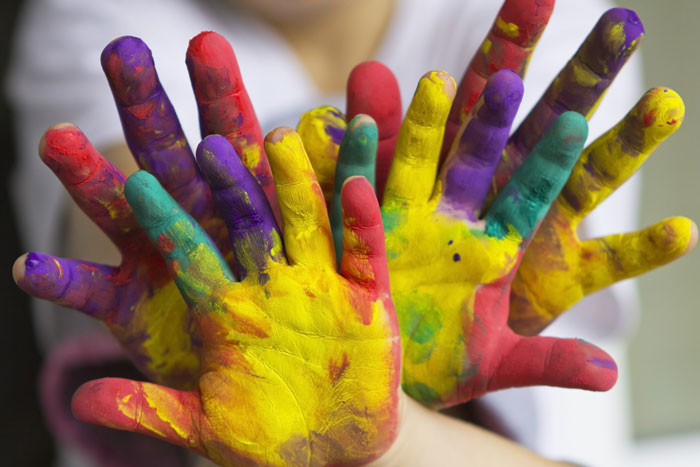Regardless of what you do for a living, increasing your ability to think creatively will do more to move you toward personal and professional success than anything else you could do. Many people believe that they are not creative because they don’t draw, sing or work in the research department. The fact is everyone is born creative. Maybe you never used that creative potential in the past, but that doesn’t mean you are not creative. As a human being, you are a creative being, regardless of whether you have stretched your creative muscles in the past or not.
You can definitely be more creative than you are now. Creativity is a skill that you can develop with time and effort. It is a matter of believing the unlimited creative potential that every human being is born with. It is a matter of learning and mastering the necessary skills and incorporating them into your daily attitudes and routines.
How can we nurture our creativity?
Embracing Failures, criticisms and complaints.
For creative people failures, glitches and problems are not obstacles but an opportunity to think out of the box. Where some people might accept defeat as an ending, creative people see it a window for innovation. They see it as another step in the evolutionary process where success is the inevitable result.
Whether it is a complaint from customer or criticism from the boss, business failure or personal failure, creative people respond differently. Most people dread complaints and defeats, creative people look forward to it. Thomas Alva Edison and Wright Brothers looked forward to failures and turned every failure into stepping stone for success.
Failures and complaints are not something to be avoided but embraced. When something doesn’t work, step into the zone of creative problem-solving. When someone is complaining or criticizing you, step into the zone of creative thinking and problem-solving.
Actively creative people develop a heightened ability for ‘seeing’ potential in any situation. They develop an immunity to the fear of failure since failure is never an ending.
By allowing yourself to live up to your creative potential, you are actually protecting yourself against failure and, therefore eliminating risk. Creative thinking is the ultimate insurance.
Letting go of ‘Functional Fixedness’ Mindset.
Functional Fixedness is a type of cognitive bias that creates a tendency in us to use an object only in a particular way. For example, when we think of hammer, we see it being used just in a specific way, that is to drive a nail into a wall. But once we let go of Functional Fixedness, then we can see a hammer being used in so many other ways. A small hammer can be used as a belt buckle, two hammers can be used by a musician for drumming. A hammer can be used as a cricket bat for playing. It can used for cooking. An empty hammer can be used for storing stuff and so on and so forth.
Not just with things, a person can become so used to doing things in a certain way that, when the approach stops working, it is difficult for him to switch to a more effective way of doing things. To some extent, we are all creatures of habit. We receive a stimulus and respond automatically. This is the way most relationships exist for us. Because we work with many of the same people and circumstances day after day, certain thinking becomes almost automatic for us.
The ability to see things in a fresh way is crucial to the creative process. Instead of settling for a status quo solution or no solution at all, you can try to solve the question by asking, “What if I tried this new way to solve this problem?” Explore new possibilities, look at the issue from multiple perspectives, see with an unusual point of view and brainstorm new ideas.
If creative people are brought together in the same room, they will fill the room with thought-provoking questions. And that’s how creative people do their work. Creative people ask lots of questions. Some of the questions don’t make any sense, but that’s how they stimulate their mind and stir up their creative energy.
Our subconscious has unlimited potential to come with ideas. To tap this vast reservoir of power, we need to ask the right questions. Men asked, ‘How to go to the moon?’ and our subconscious mind came up so many possibilities. In QuestionStorming, the objective is to ask questions, not come up with solutions.
Brainstorming involves generating new ideas as rapidly as possible, without stopping to judge or discuss them. QuestionStroming is similar to brainstorming in that we produce one question after another, with judgment and by suspending disbelief. QuestionStorming differs from brainstorming in its focus on questions, not ideas.
QuestionStorming will develop a habit of asking questions and challenging the status quo which will lead to developing your creative potential. Once you ask a question, the subconscious starts looking out for an answer. Question everything, every day and you never know when you will hit an idea that can change the world.
Do something you have never done
To get something you never had, you have to do something you have never done before. You may not be able to quit your job or travel the world, but every day contains within it countless opportunities. The key is to step out of your comfort zone. Meet people outside of your domain, show interest in things that have nothing to with your job and hobbies. Ask an Airport staff about what he or she finds most fascinating. Ask a pharmacist about new and exciting things happening in the pharma world, join a club where you can meet people who are entirely different from you. Join a training program which has nothing to do with your job or interest. Just explore. Try out a new dish that never had before. Volunteer for community projects or social work. The more you stay in your domain, the more difficult it is to think out of the box. The more you meet new and diverse people, the more you do things outside your domain, the easier it is to think out of the box.
– Manoj Keshav
Comments are closed.





